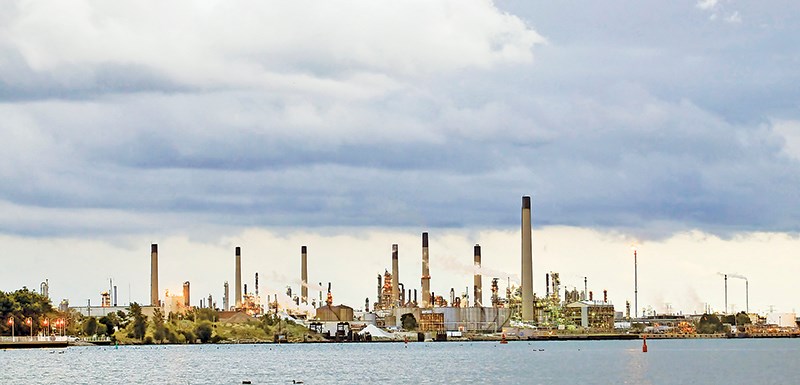Journal Staff
A health study of local residents 11 years in the making is finally about to move beyond the planning stage.
A third-party agency will be hired this fall to assess the impact of air-borne industrial chemicals on people and crops, the Ontario Environment Ministry says.
The study will probe the link between the local environment and human wellbeing as it attempts to answer the question: Does exposure to chemicals in the air pose a health risk?
It will also consider the impact of air pollution on garden produce and medicinal plants, a consideration sought by the Aamjiwnaang First Nation.
The agency that’s hired this fall will also assess how people living near industrial facilities are impacted by noise, vibration, odour and nighttime light, said Julie Schroeder, a director with the ministry’s technical assessment branch.
“We heard very clearly this should be conducted by an agency outside the ministry,” she told city council earlier this month.
The two-year study is expected to cost about $2 million.
The initiative began in 2008 when a committee was formed to determine what impact environmental pollution has had on the local population.
The group, chaired by former city councillor Anne Marie Gillis, had broad input from municipalities, First Nations, labour, health officials and the industry-funded Sarnia-Lambton Environmental Association.
It folded because of a lack of government support.
Lambton’s Medical Officer of Health said he welcomes the ministry’s decision to hire an outside agency because it will help ensure an independent, transparent report.
Assessing chemical exposures and how they potentially impact health is a useful exercise, said Dr. Sundit Ranade, who met with the environment minister last year.
“I don’t think that one study is ever going to put the whole issue to rest,” he said, noting many residents have made up their mind one way or another.
“(But) I think for the general population it would be useful to have a better understanding of what the risk is.”
